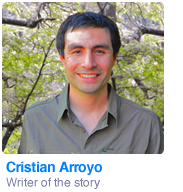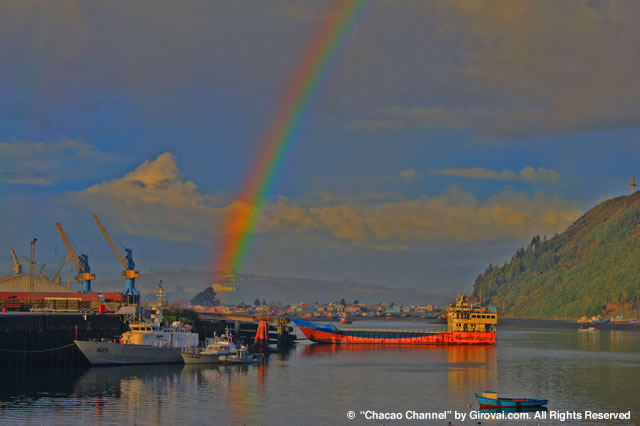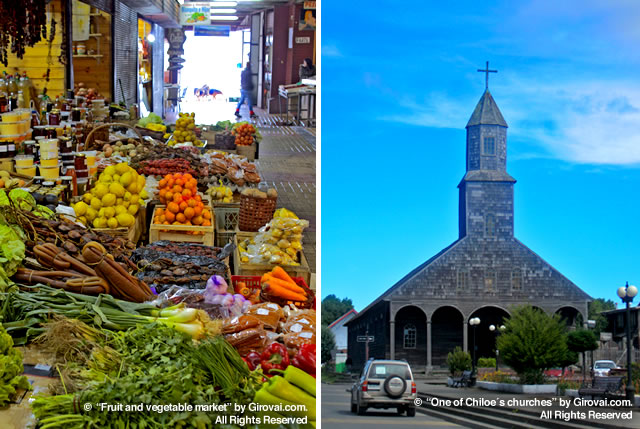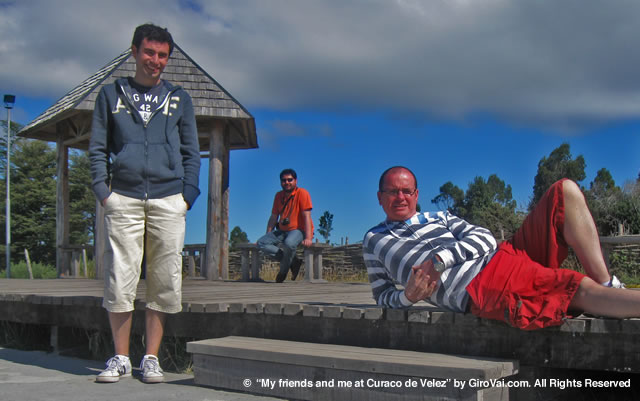We were in Ancud after a trip from Puerto Montt. The day was overcast and we were not really eager to continue our journey. We had rented a car and we were going to use it to recover the investment. My friend Leo and I wanted to show Gary, our English friend the largest island of Chile, called Chiloé. We set a goal of reaching Castro, the capital of the island, which we never made it, but had found some unexpected treasures along the way. We made our way to a small town called Dalcahue with great attractions.
What is known as Chiloé island is actually an archipelago of more than 60 islands. To get there you need to take a ferry from the mainland, a journey of about 25 to 30 minutes. It is still uncertain if a bridge will finally be built linking the mainland with the island. The Chiloé inhabitants or chilotes opposed saying they do not want their island to become just another part of Chile. And actually having to cross by ferry adds a certain charm to the expedition and I can see it may keep a few people from not visiting the island.
The island is characterised by its old churches. Nuestra Señora de los Dolores de Dalcahue was founded in 1849 by Jesuit missionaries and declared a National Monument in 1971 and UNESCO declared it a World Heritage site in late 2000 because of its architecture and age being the oldest on the island. There are not only churches in Dalcahue but also a craft market and a fine food market. Although the churches were interesting it was in the food market that we found the highlight of the day.
The food market is a collection of mini restaurants within the hall. There were about 20 to 30 of these restaurants. Each of the restaurants look like a television set ready for cooking and chatting while the chef prepares the food and the star guests chat about themselves. Each of the kitchens had a cook or two who worked within a small space preparing, washing and cooking for the public with a breakfast bar round the outside which can seat at maximum six people. You could take your food and eat it around the outside of the hall where extra seats were available. Most of the entertainment was around the kitchen and what was going on in the kitchen. To miss it is a great shame as both visitors and locals with their problems of everyday life unfolded in front of you whether it would be children telling their mums about their day at school or cooks talking about their marital problems (the food was excellent). We had a curanto which is a medley of sea food, potatoes, beef and sausages, produced locally in a stock laced with white wine served with a chapalele dough made from potatoes and wheat flour. Locals say that after eating this meal it is time for a sleep.
After dinner, we made our way to Curaco Vélez another island placed just in front of Dalcahue. The main attraction of this tiny island is a viewpoint from above the town where it is possible to get a wonderful view of the archipelago. There are benches, spacious lawns and children play area and on this occasion was a great place to catch some sun. The reason why we never got to Castro was the curanto got the better of us and we took the local advice as the sun shone down on the viewpoint.
WRITTEN BY CRISTIAN ARROYO



